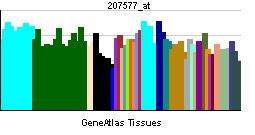Entrez 3360 | Ensembl ENSG00000164270 | |
 | ||
Aliases HTR4, 5-HT4, 5-HT4R, 5-HT4 receptor, 5-hydroxytryptamine receptor 4 External IDs Similar 5 HT5A receptor, 5 HT3 receptor, 5 HT1 receptor | ||
Function
This gene is a member of the family of Human serotonin receptors, which are G protein-coupled receptors that stimulate cAMP production in response to serotonin (5-hydroxytryptamine). The gene product is a glycosylated transmembrane protein that functions in both the peripheral and central nervous system to modulate the release of various neurotransmitters. Multiple transcript variants encoding proteins with distinct C-terminal sequences have been described, but the full-length nature of some transcript variants has not been determined.
Location
The receptor is located in the alimentary tract, urinary bladder, heart and adrenal gland as well as the central nervous system (CNS). In the CNS the receptor appears in the putamen, caudate nucleus, nucleus accumbens, globus pallidus, and substantia nigra, and to a lesser extent in the neocortex, raphe, pontine nuclei, and some areas of the thalamus. It has not been found in the cerebellum.
Isoforms
Internalization is isoform-specific.
Ligands
Several drugs that act as 5-HT4 selective agonists have recently been introduced into use in both scientific research and clinical medicine. Some drugs that act as 5-HT4 agonists are also active as 5-HT3 antagonists, such as Mosapride, Metoclopramide, Renzapride, and Zacopride, and so these compounds cannot be considered highly selective. Research in this area is ongoing.
SB-207,145 radiolabeled with carbon-11 is used as a radioligand for 5-HT4 in positron emission tomography pig and human studies.
